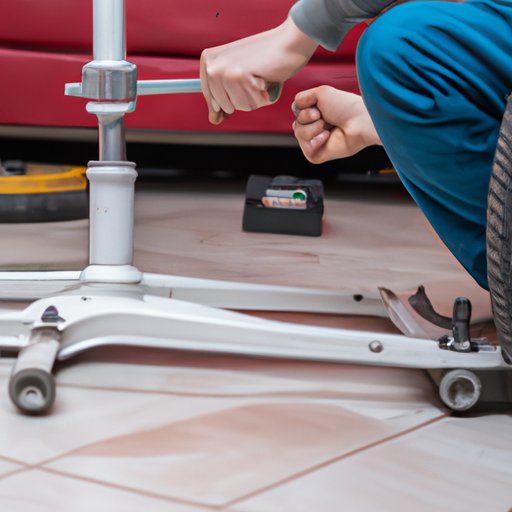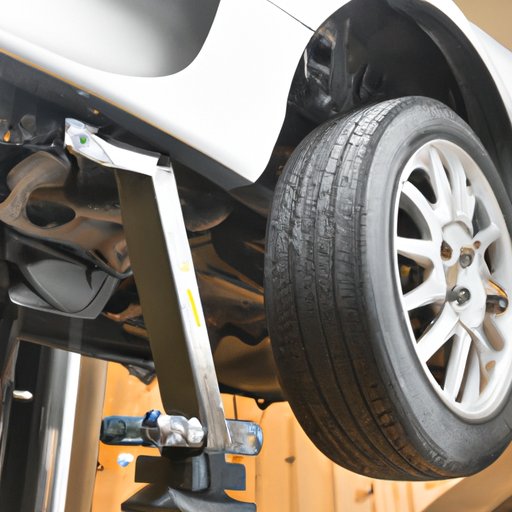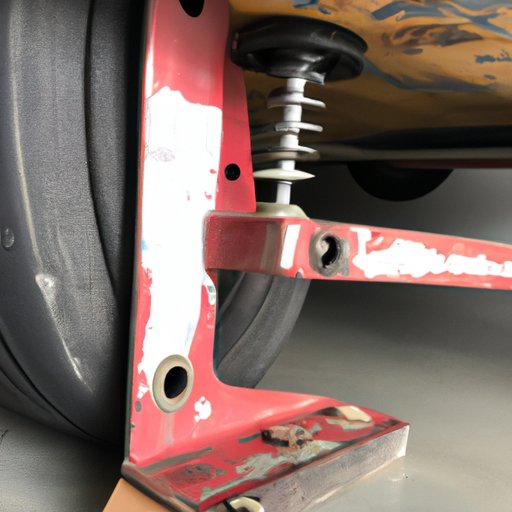Introduction
Having a properly aligned car is essential for ensuring optimal performance and safety on the road. Aligning a car involves adjusting the angles of the steering and suspension components so that they are set according to manufacturer specifications. Doing a car alignment at home can be a great way to save money and time, as long as you have the right tools and knowledge. In this article, we’ll cover the basics of car alignment, the necessary tools and materials, and how to align a car yourself.

Basic Steps to Aligning a Car at Home
The first step in doing a car alignment at home is to check the camber, caster, and toe angles. The camber angle is the angle between the wheel and the vertical plane when viewed from the front or rear of the car. The caster angle is the angle between the steering axis and the vertical plane when viewed from the side of the car. The toe angle is the difference between the distance between the front and back of the tire when viewed from above. These angles should be checked with a specialized tool such as a caster/camber gauge or a digital inclinometer.
Once the angles have been checked, the next step is to adjust the suspension components. This may include adjusting the lower control arms, tie rods, sway bars, or other related components. It’s important to refer to the vehicle’s service manual before attempting any adjustments, as each make and model may require different adjustments. Additionally, some vehicles may require that the suspension be removed from the vehicle in order to access certain components.
After all the adjustments have been made, the alignment should be tested by driving the vehicle on a flat surface. If the alignment is correct, the vehicle should drive straight without any pulling or drifting. If there is still an issue, further adjustments may be necessary.
Maintaining the Alignment Over Time
Once the car has been aligned, it’s important to keep the alignment in check over time. This can be done by regularly checking the camber, caster, and toe angles using the same methods as before. Additionally, it’s important to inspect the suspension components for signs of wear and tear, as these can affect the alignment. Finally, it’s important to have the alignment checked periodically by a professional, as they may be able to spot issues that would otherwise go unnoticed.

Potential Issues When Aligning a Car at Home
When doing a car alignment at home, there are a few potential issues that may arise. One of the most common issues is misdiagnosing the issue. It’s important to be sure that the issue is actually an alignment issue before attempting any adjustments, as making adjustments without properly diagnosing the issue can cause more damage than good. Additionally, it’s important to use the proper tools and techniques when making adjustments, as incorrect adjustments can lead to unsafe driving conditions. Lastly, it’s important to be aware of any warranties that may be voided if the car is worked on outside of a professional shop.
Conclusion
Aligning a car at home can be a great way to save money and time, as long as you have the right tools and knowledge. It’s important to check the camber, caster, and toe angles, as well as to adjust the suspension components according to the vehicle’s service manual. Additionally, it’s important to keep the alignment in check over time by regularly checking the angles and inspecting the suspension components. Lastly, it’s important to be aware of any potential issues that may arise when doing a car alignment at home.
In conclusion, aligning a car at home can be a great way to save money and time, as long as you have the right tools and knowledge. It’s important to remember the importance of proper alignment and safety, as improper alignment can lead to dangerous driving conditions. With the right tools and knowledge, anyone can do a car alignment at home.
(Note: Is this article not meeting your expectations? Do you have knowledge or insights to share? Unlock new opportunities and expand your reach by joining our authors team. Click Registration to join us and share your expertise with our readers.)
